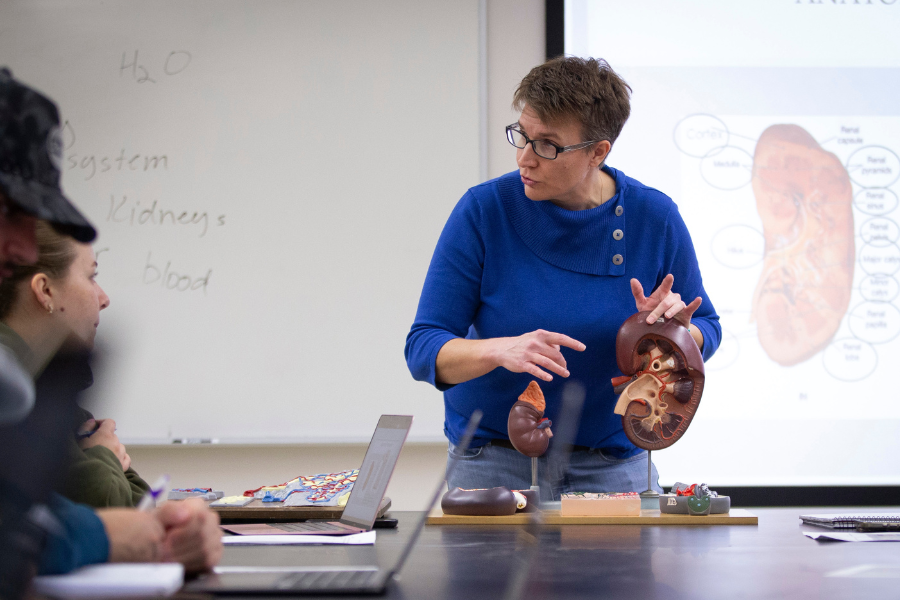Primary schoolchildren told to wear layers amid heating issues – BBC

Report on Infrastructure Deficiencies at Bishop’s Cleeve Primary Academy and Alignment with Sustainable Development Goals
Executive Summary
This report details the critical infrastructure failure at Bishop’s Cleeve Primary Academy in Gloucestershire, where the main heating system is operating at only 50% capacity. This situation necessitates temporary heating measures and poses significant challenges to the learning environment, directly impacting the United Kingdom’s commitment to several Sustainable Development Goals (SDGs). Despite repeated attempts by the Gloucestershire Learning Alliance Trust (GLA) to secure government funding for a permanent solution, estimated at £1 million, the issue remains unresolved. This report analyzes the failure, its implications for key SDGs, and the responses from various stakeholders.
Analysis of Infrastructure and Funding Failure
The core issue stems from an ageing and failing heating system that cannot adequately heat the school, particularly during colder months. This has led to a series of challenges and responses:
- System Capacity: The main heating system is unable to increase its output beyond 50%, rendering it insufficient for winter conditions.
- Financial Requirement: A full replacement of the system is required, with an estimated cost of approximately £1 million.
- Funding Applications: The school, through the GLA, has faced significant hurdles in securing necessary capital.
- Three consecutive annual applications to the government’s Condition Improvement Fund (CIF) have been unsuccessful.
- A new CIF bid has been submitted, with the Trust hopeful for a positive outcome.
- Interim Measures: The school has been forced to rely on temporary electric heaters, some of which were donated by parents, to maintain acceptable temperatures in classrooms.
Implications for Sustainable Development Goals (SDGs)
The situation at Bishop’s Cleeve Primary Academy directly contravenes the principles of several key SDGs, highlighting a gap between national commitments and local realities.
- SDG 3: Good Health and Well-being: Inadequately heated classrooms pose a direct risk to the health and well-being of both students and staff. A cold environment can impede concentration and contribute to illness, undermining the goal of ensuring healthy lives.
- SDG 4: Quality Education: A safe, comfortable, and supportive physical learning environment is a prerequisite for quality education. The current conditions create a significant barrier to effective teaching and learning, forcing children to wear extra layers and potentially impacting academic performance.
- SDG 7: Affordable and Clean Energy: The reliance on an old, inefficient central heating system, supplemented by numerous individual electric heaters, represents an unsustainable and inefficient energy model. A modern replacement would provide an opportunity to align with SDG 7 by installing an energy-efficient system, reducing both costs and environmental impact.
- SDG 9: Industry, Innovation and Infrastructure: This goal calls for building resilient, sustainable, and reliable infrastructure. The school’s failing heating system exemplifies a critical lapse in maintaining essential public infrastructure, particularly that which serves vulnerable populations like children.
- SDG 11: Sustainable Cities and Communities: Schools are fundamental components of sustainable communities. Ensuring they are safe, resilient, and adequately maintained is crucial for community well-being. The failure to provide a basic necessity like reliable heating undermines the resilience of this community asset.
Stakeholder Responses and Actions
Various stakeholders have responded to the ongoing crisis, reflecting a multi-level effort to address the immediate and long-term challenges.
- Gloucestershire Learning Alliance Trust (GLA): The Trust has actively pursued government funding while investing its own resources in risk mitigation and temporary heating solutions. It has also developed contingency plans to ensure educational continuity in a safe environment.
- Parents and Local Community: Parents have demonstrated proactive support by donating heaters and raising the issue with their local Member of Parliament to increase political awareness and pressure for a resolution.
- Local Government Officials: County Councillor Leigh Challis has advocated for transparency by requesting temperature readings be shared with parents. Education and Skills Cabinet Member, Linda Cohen, confirmed that the Trust has assessed temperatures and deployed additional heaters to the most affected areas.
- Department for Education (DfE): The DfE has reiterated its long-term funding commitment to improve school conditions and highlighted that the academy can apply for Urgent Capital Support if the situation threatens school operations.
Analysis of Sustainable Development Goals in the Article
1. Which SDGs are addressed or connected to the issues highlighted in the article?
-
SDG 4: Quality Education
- The article directly relates to SDG 4 by highlighting how inadequate school infrastructure negatively impacts the learning environment. The failing heating system, which can only run at 50% capacity, creates cold classrooms where children “are having to wear extra layers of clothing.” This condition is not conducive to an effective or quality educational experience. The school’s effort to secure funding to create a “warm and safe environment” is a core component of ensuring quality education.
-
SDG 3: Good Health and Well-being
- The issue connects to SDG 3 as the cold conditions in the school pose a potential health risk to students and staff. Consistently low temperatures can increase susceptibility to illnesses. The concern is explicitly mentioned when a councillor asks for “temperature readings to be shared so families can be reassured that conditions are now safe,” directly linking the physical environment to the health and well-being of the children.
-
SDG 7: Affordable and Clean Energy
- This goal is relevant because the “old boiler and heating system” is likely inefficient. Replacing an ageing system that requires a £1m investment implies an opportunity to upgrade to a more modern, energy-efficient solution. Furthermore, the temporary reliance on numerous “additional electric heaters” is often an energy-intensive and inefficient method for heating large spaces, contrasting with the principles of sustainable energy use.
-
SDG 11: Sustainable Cities and Communities
- SDG 11 aims to ensure access to safe and basic services. A school is a fundamental community facility and a basic service. The article describes a failure in this service, as the school’s infrastructure is inadequate to provide a “warm and safe environment.” The struggle to secure funding for essential maintenance of public infrastructure like a school building is a direct challenge to creating sustainable and resilient communities.
2. What specific targets under those SDGs can be identified based on the article’s content?
-
Target 4.a: Build and upgrade education facilities that are child, disability and gender sensitive and provide safe, non-violent, inclusive and effective learning environments for all.
- The article’s central theme is the failure to meet this target. The Bishop’s Cleeve Primary Academy currently lacks an “effective learning environment” due to its failing heating system. The school’s repeated, unsuccessful bids for the government’s Condition Improvement Fund (CIF) to replace the system for £1m is a direct attempt to upgrade its facilities to make them safe and functional for students.
-
Target 3.d: Strengthen the capacity of all countries… for early warning, risk reduction and management of national and global health risks.
- On a local level, the cold school environment represents a manageable health risk. The school’s actions of sending letters to parents, installing temporary heaters, and the councillor’s demand for temperature readings are all measures aimed at risk reduction and management. The situation highlights a breakdown in the capacity to manage this risk effectively due to funding shortfalls.
-
Target 7.3: By 2030, double the global rate of improvement in energy efficiency.
- The need to replace an “old boiler and heating system” that can only operate at “50% capacity” strongly implies that the current system is highly inefficient. Investing £1m in a new system would inherently involve installing modern technology with significantly improved energy efficiency, contributing to this target.
3. Are there any indicators mentioned or implied in the article that can be used to measure progress towards the identified targets?
-
Implied Indicator for Target 4.a: Functionality and safety of school infrastructure.
- The article provides several data points that can serve as indicators. These include the heating system’s operational level (“50% capacity”), the cost required for replacement (“around £1m”), and the number of unsuccessful funding applications (“over the last three years”). A key performance indicator mentioned is the classroom temperature itself, as a councillor “has asked for temperature readings to be shared” to ensure conditions are safe.
-
Implied Indicator for Target 3.d: Measures taken to mitigate local health risks in public institutions.
- The article implies indicators for risk management. These include the communication with parents (“sent out a letter to parents”), the implementation of temporary solutions (“installed additional electric heaters”), and the establishment of contingency plans (“have contingency plans in place”). The request for temperature readings is a direct call for a metric to monitor and manage the health risk.
-
Implied Indicator for Target 7.3: Investment in energy-efficient infrastructure.
- The primary indicator implied in the article is the financial investment needed to upgrade the inefficient system. The “£1m” cost to replace the heating system and the school’s application to the “Condition Improvement Fund (CIF)” represent a clear effort to invest in more efficient infrastructure. Progress could be measured by the successful allocation and use of such funds for energy-efficient upgrades.
SDGs, Targets, and Indicators Analysis
| SDGs | Targets | Indicators (Mentioned or Implied in the Article) |
|---|---|---|
| SDG 4: Quality Education | 4.a: Build and upgrade education facilities to provide safe and effective learning environments. |
|
| SDG 3: Good Health and Well-being | 3.d: Strengthen capacity for risk reduction and management of national health risks. |
|
| SDG 7: Affordable and Clean Energy | 7.3: Double the global rate of improvement in energy efficiency. |
|
| SDG 11: Sustainable Cities and Communities | 11.1: Ensure access for all to adequate, safe and affordable housing and basic services. |
|
Source: bbc.com
What is Your Reaction?
 Like
0
Like
0
 Dislike
0
Dislike
0
 Love
0
Love
0
 Funny
0
Funny
0
 Angry
0
Angry
0
 Sad
0
Sad
0
 Wow
0
Wow
0




















































.jpg.webp?itok=0ZsAnae9#)


























